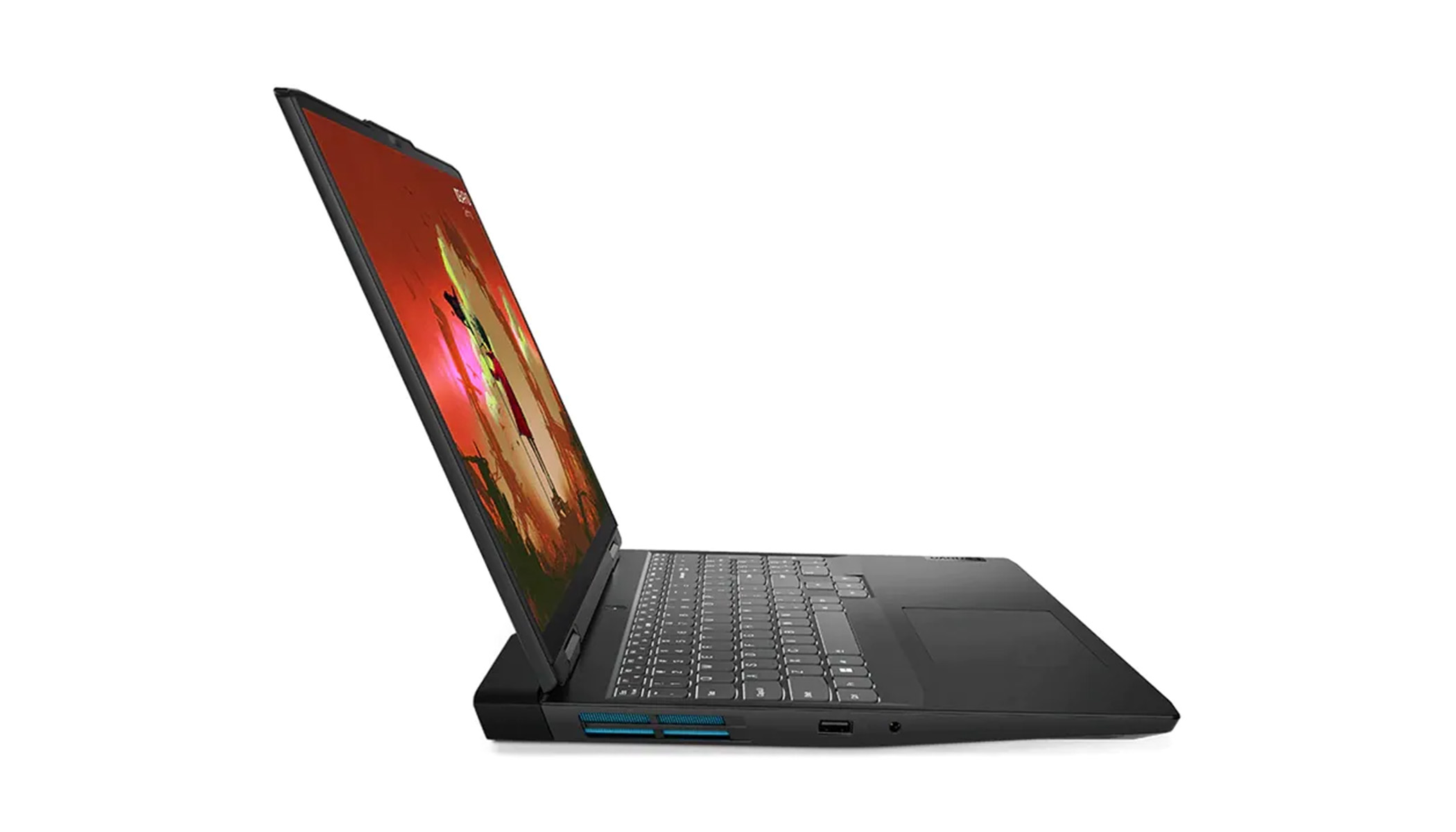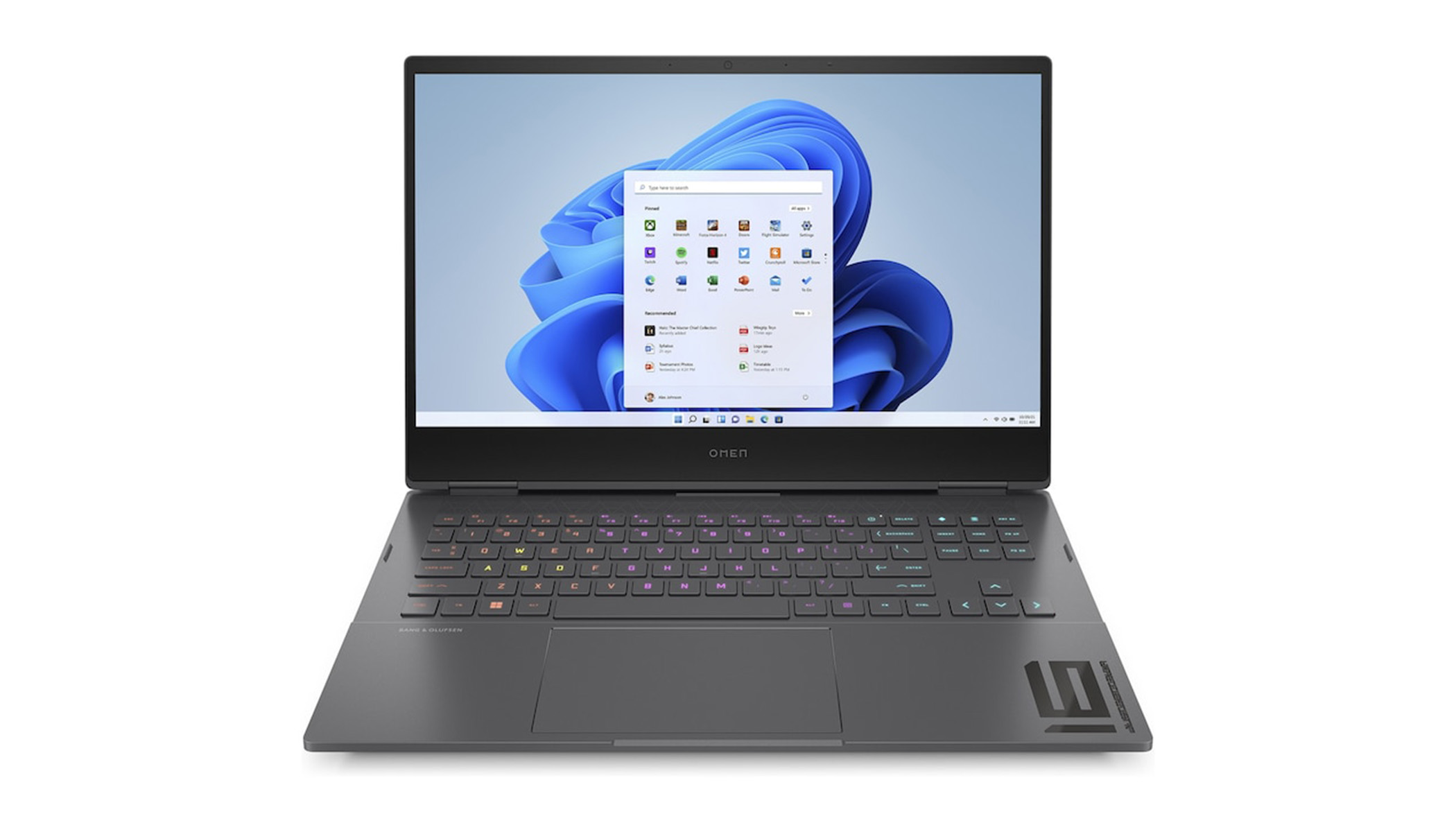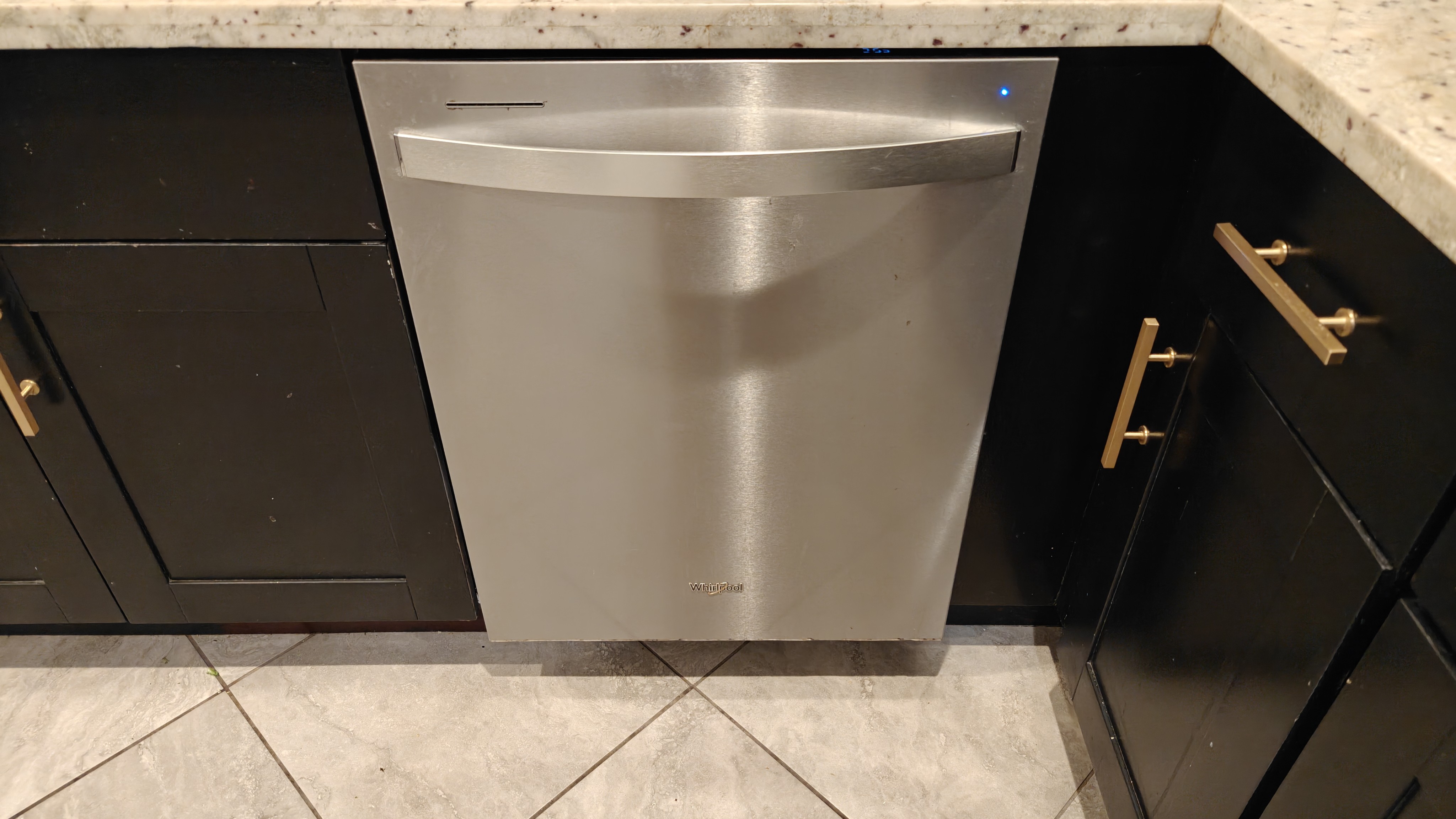Battle of the budget laptops: Lenovo vs HP
In this article, it’s Lenovo vs HP as we pit the IdeaPad Gaming 3 Gen 7 against the HP Omen 16-n0007na in a battle for budget gaming laptop supremacy.

Display size: 15.6-inches
Display: 1920x1200 resolution
Capacity: 512GB SSD, 1TB SSD (Multi-drive options)
Chip: AMD Ryzen 5 6600H
Camera: 720p webcam
Speakers: Stereo speakers
Weight: 5.1lbs
Lenovo’s IdeaPad Gaming 3 Gen 7 is a budget-to-mid-range gaming laptop that offers an eye-catching design but with a few drawbacks.
As much as we’re certainly fond of the fast storage and DDR5 RAM, we’re less convinced by the 1080p display – although it does have a 120Hz refresh rate for twitchier shooters where every second counts.
There’s also a 720p webcam, and the speakers lack range. The keyboard also feels a little flimsy for our tastes. Thankfully the RTX 3050 GPU is a solid performer in all but the latest games, meaning with a few adjustments you can find plenty of detail and steady frame rates in games that run well at 1080p.
We’d also argue it’s quite stylish in a way Lenovo laptops rarely are, with a subtle outcrop at the back behind the hinge that differentiates it from many rank and file alternatives. If you can find it for a decent price, it’s well worth a look, but it’s tough to recommend for anything more than a budget laptop buyer that wants to play more games on the go.
Pros
- 3050 GPU is plenty
- 512GB of SSD storage as standard
- Relatively affordable
Cons
- Only 1080p resolution
- Could do with more ports
- 720p webcam

Display size: 16.1 inches
Display: 1920x1080 resolution
Capacity: 512GB, 1TB
Chip: AMD Ryzen 7
Camera: 720p Webcam
Speakers: Stereo Speakers
Weight: 5.14lbs
HP’s Omen laptops have looked a little more ostentatious in the past, but this 16-n0007na model keeps its gaming ambitions close to its chest with a relatively low-key appearance until you open the lid and see the RGB-lit keys.
Once you do, the 16.1-inch display dominates, and while it’s another 1080p option, HP does offer a build-to-order variant with a 1440p resolution – and we’d recommend it if you can find a deal.
Speaking of recommendations, the NVIDIA GeForce RTX 3050 inside is certainly powerful enough for many (and matches the Lenovo offering’s GPU), but we’d recommend springing for the AMD Radeon 6650M if you do get the QHD variant – although that does add a chunk to the price.
Even in its stock formation, though, the HP Omen is a solid laptop that’s well worth a look for budget-conscious gamers or creatives that want a little bit of RGB razzle-dazzle but not enough to draw too much attention in meetings.
Pros
- 3050 GPU is solid and upgradeable
- 144Hz refresh rate
Cons
- 1080p resolution is standard
- 720p webcam
Lenovo vs HP: Design
When it comes to looks, this could go either way. Are you looking for a laptop that cuts a unique figure when you open it? Then the Lenovo IdeaPad Gaming 3 might be worth a look, with its vents tucked away on the outcrop at the back.
It certainly gives it the look of a gaming laptop, with the white lighting on the keys a nice touch – although many have complained that the keyboard itself feels a little on the cheap side.
On the other hand, we quite like the Omen’s more subtle design. It’s a sleek-looking machine (although we could do without the branding on the inside), and the RGB is understated and smart.
With that said, it does have a sizeable lower bezel that makes the 16-inch display somehow feel a little smaller than it should.
Winner: Tie
Lenovo vs HP: Display
As we’ve mentioned on a few of these versus articles, we’d always advise looking for as high a resolution as possible. That’s made comparing 1080p panels to 2.5K and 4.5K ones nice and easy, but here we have two with a Full HD resolution and there’s little to tell them apart.
Sadly, both are a little on the dark side, so you may struggle with outdoor usage, but the HP does offer a 144Hz refresh rate compared to the 120Hz offered by the Lenovo.
Sign up to receive the latest news, reviews, buying guides and deals direct to your inbox
That’s enough to give it the win, particularly when paired with the slightly larger display area, but we’d definitely recommend the QHD version with a resolution of 2560x1440. Even if you don’t need it now, it allows you to futureproof the laptop for years to come.
Winner: HP Omen 16-n0007na
Lenovo vs HP: Audio
The Lenovo IdeaPad Gaming 3 isn’t a bad laptop for audio, but it does fall into the usual trap of offering plenty of mid but lacking the soundstage to offer anything higher or lower, leading to washed-out treble and bass.
If you’re wearing headphones, that’s no big deal, but the HP comes packed with Bang and Olufsen speakers that offer a much wide range of audio, whether you’re listening for footsteps in a game or enjoying the deep “boom” of an action scene in a superhero movie.
For the much more nuanced audio output, this round goes to the HP Omen.
Winner: HP Omen 16-n0007na
Lenovo vs HP: Performance
It’s a close one here, but Lenovo’s RTX 3050 is a slither more powerful than the RTX 3050 TI found in the HP Omen, but the latter closes the gap with double the RAM.
That means for multitasking, the HP could be the way to go, but the Lenovo has a little more power across gaming and creative tasks.
As we’ve alluded to multiple times, though, we’d still go for the HP but with the AMD Radeon 6650M. It’s still a mid-range card but it’s considerably newer and faster – although not as power efficient.
Since it’s not a standard option, though, we’ll call this one a tie.
Winner: Tie
Lenovo vs HP: Value
Buying Guides
Laptops with best battery life: Get a long-lasting laptop for hours of use
Lightest laptop: These are the best ultrabooks for ultimate portability
Quietest PC: Almost silent computers for your home office
Best home computers 2025: the top desktop PCs and Macs, chosen by experts
Best computer protection software 2022
Best internet filter software: protect your family with these website blockers
Best internet security software: Protect your online devices
Best antivirus software: Stay safe online with premium and free software
Best VPN service 2022: keep your data secure
Reviews
With both machines at similar price points, it’s tough to say which offers the best bang for your buck because the design choices are subjective and the performance (at the base level) is very similar aside from the additional RAM.
For better speakers, we’d argue that the HP tips the scales in its favour, but it really is a difficult one. We’d look for discounts on either, or on the HP version with the more powerful GPU and 1440p display.
Winner: Tie
Lenovo vs HP: Verdict
With comparable specs from the GPU to the display, to just about everything else, this is certainly a tough “versus” to pick a winner from.
In the end, we’ve gone with the HP Omen, but with a catch – we’d recommend spending the extra for the AMD Radeon 6650 for any gaming, and would recommend considering the QHD screen version to go with it.

Lloyd Coombes is Top Ten Reviews' Computing Customer Advisor, and a freelance writer with a specialism in tech, gaming, and fitness. Since starting out as a blogger, he’s written for sites like IGN, TechRadar, and more.
An expert on all things Apple ever since he got a second-hand iMac, Lloyd can regularly be found testing software on iPhone, iPad, Apple Watch and Mac — when he’s not testing the platforms themselves, that is. He’s also Dexerto.com’s Games Editor, and a podcaster.
When he’s not writing, you can probably find him running after his son, playing Destiny 2, or at the gym.
